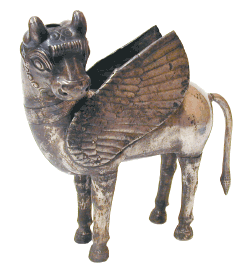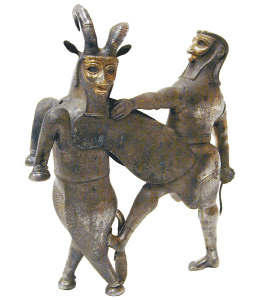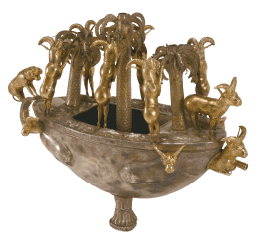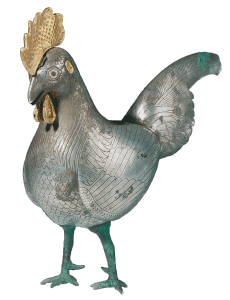

Mesopotamian mythology stressed the finitude of human life. The ancient Iranians took the symbols of eternity that appeared in these myths and created containers and pouring vessels modeled after them.
Gilgamesh was the king of Uruk in southern Mesopotamia. In order to control his tyrannical ways, the gods sent Enkidu to fight Gilgamesh. After the fight broke off, the two became lifelong friends. They traveled together to the Cedar Forest to slay the monster Humbaba and later kill the Bull of Heaven, which was sent by the gods to cause seven years of bad crops. These episodes marked the height of their friendship.

Later, Enkidu fell ill and died. Gilgamesh then sets off in search of eternal life. Along his journey, he met Utnapishtim, who gained immortality by building an ark just as the gods instructed him to survive the great flood. Although Gilgamesh listened to the immortal’s story, in the end, he could not endure the tests and failed to learn the secrets to immortality.


The secret to eternal life...
The ancients may have tried to discover the answer
In their unusual vessels.
The ancients may have tried to discover the answer
In their unusual vessels.



The ancient Iranians produced sculpture-like vessels made of metal sheets. If you look closely, you can see that they always have a mouth to pour in and a spout to pour out liquids. In Zoroastrianism, the rooster was an important symbol of purification. The cockscomb for this pitcher acts as its lid.